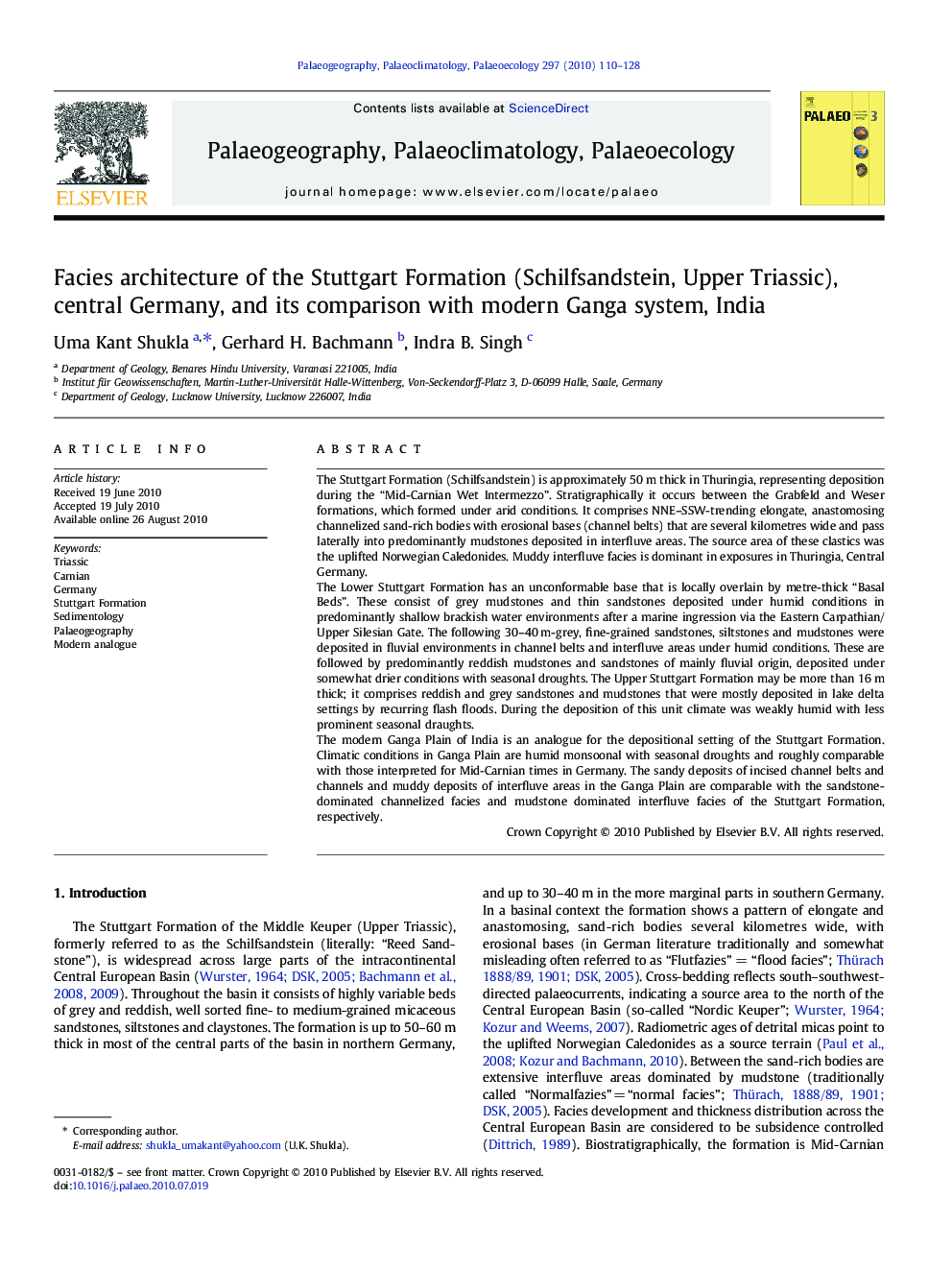| کد مقاله | کد نشریه | سال انتشار | مقاله انگلیسی | نسخه تمام متن |
|---|---|---|---|---|
| 4467507 | 1314080 | 2010 | 19 صفحه PDF | دانلود رایگان |

The Stuttgart Formation (Schilfsandstein) is approximately 50 m thick in Thuringia, representing deposition during the “Mid-Carnian Wet Intermezzo”. Stratigraphically it occurs between the Grabfeld and Weser formations, which formed under arid conditions. It comprises NNE–SSW-trending elongate, anastomosing channelized sand-rich bodies with erosional bases (channel belts) that are several kilometres wide and pass laterally into predominantly mudstones deposited in interfluve areas. The source area of these clastics was the uplifted Norwegian Caledonides. Muddy interfluve facies is dominant in exposures in Thuringia, Central Germany.The Lower Stuttgart Formation has an unconformable base that is locally overlain by metre-thick “Basal Beds”. These consist of grey mudstones and thin sandstones deposited under humid conditions in predominantly shallow brackish water environments after a marine ingression via the Eastern Carpathian/Upper Silesian Gate. The following 30–40 m-grey, fine-grained sandstones, siltstones and mudstones were deposited in fluvial environments in channel belts and interfluve areas under humid conditions. These are followed by predominantly reddish mudstones and sandstones of mainly fluvial origin, deposited under somewhat drier conditions with seasonal droughts. The Upper Stuttgart Formation may be more than 16 m thick; it comprises reddish and grey sandstones and mudstones that were mostly deposited in lake delta settings by recurring flash floods. During the deposition of this unit climate was weakly humid with less prominent seasonal draughts.The modern Ganga Plain of India is an analogue for the depositional setting of the Stuttgart Formation. Climatic conditions in Ganga Plain are humid monsoonal with seasonal droughts and roughly comparable with those interpreted for Mid-Carnian times in Germany. The sandy deposits of incised channel belts and channels and muddy deposits of interfluve areas in the Ganga Plain are comparable with the sandstone-dominated channelized facies and mudstone dominated interfluve facies of the Stuttgart Formation, respectively.
Journal: Palaeogeography, Palaeoclimatology, Palaeoecology - Volume 297, Issue 1, 1 November 2010, Pages 110–128